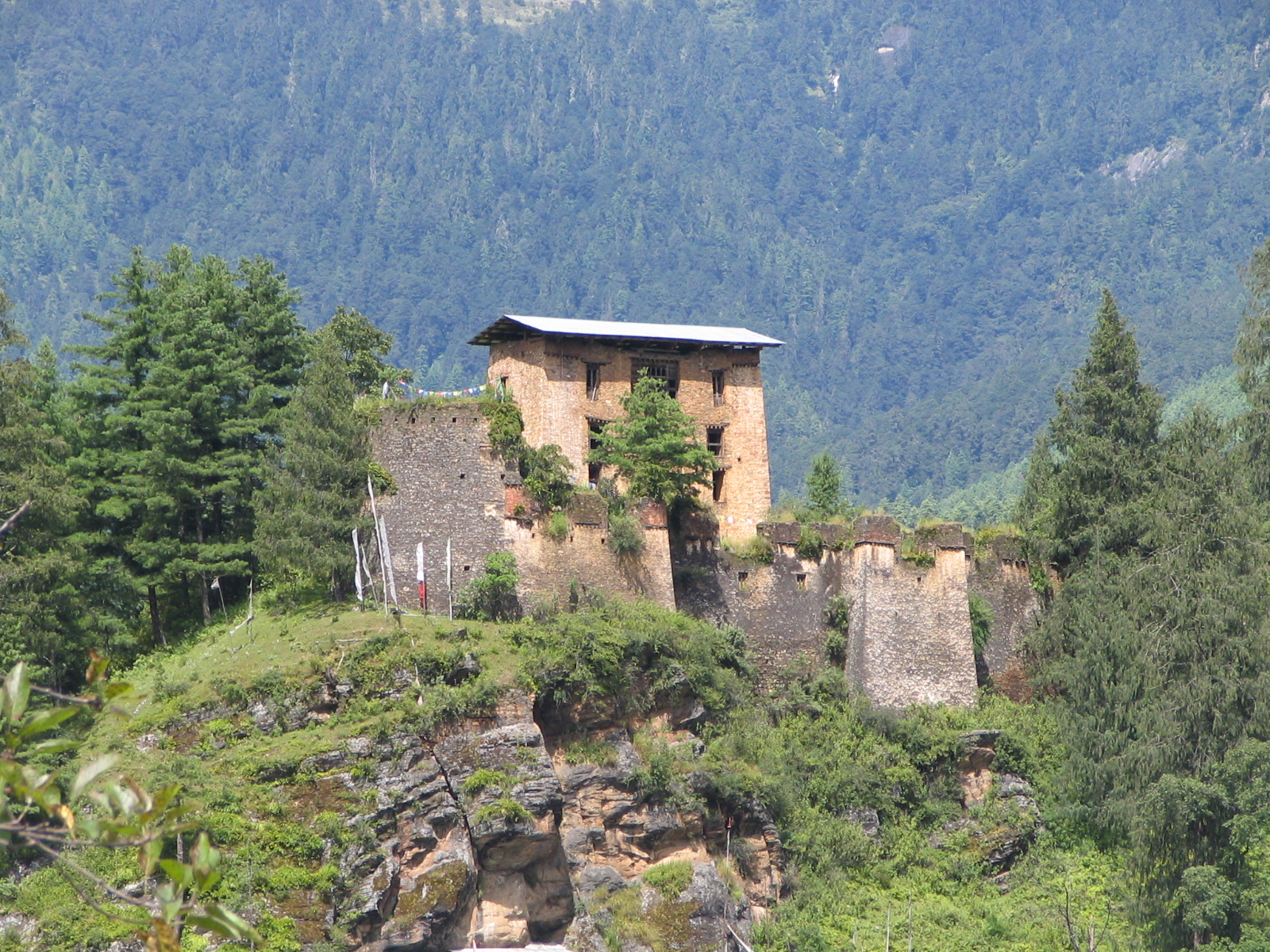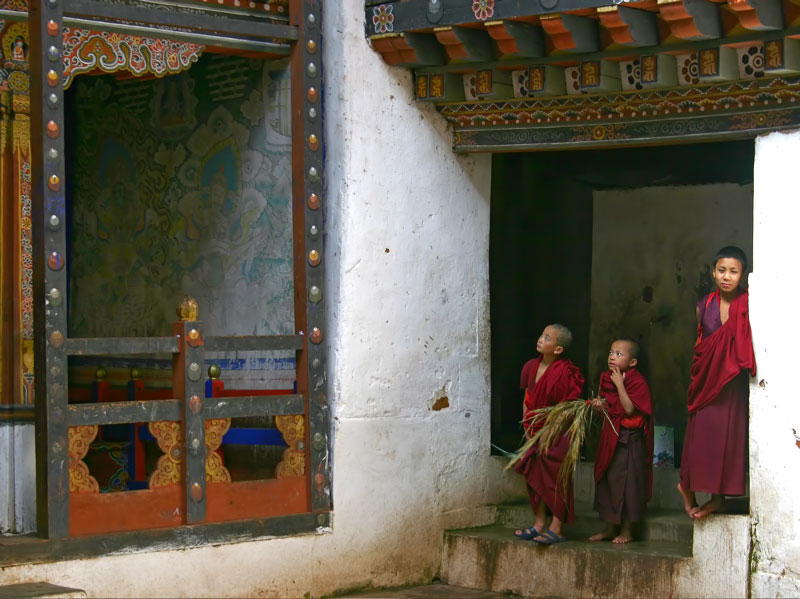|
Tourism In Bhutan
Tourism in Bhutan began in 1974, when the Government of Bhutan, in an effort to raise revenue and to promote Bhutanese unique culture and traditions to the outside world, opened its isolated country to foreigners. In 1974 a total of 287 tourists visited the Kingdom of Bhutan. The number of tourists visiting Bhutan increased to 2,850 in 1992, and rose dramatically to 7,158 in 1999. By the late 1980s tourism contributed over US$2 million in annual revenue. Though open to foreigners, the Bhutanese government is acutely aware of the environmental impact tourists can have on Bhutan's unique and virtually unspoiled landscape and culture. Accordingly, they have restricted the level of tourist activity from the start, preferring higher-quality tourism. Initially, this policy was known as "high value, low volume" tourism. It was renamed in 2008 as "high value, low impact", "a subtle but significant shift". While the low impact is guaranteed through the low number of visitors, it is a requ ... [...More Info...] [...Related Items...] OR: [Wikipedia] [Google] [Baidu] |
Drukair Airbus A319 At Paro Airport No1
Drukair Corporation Limited ( dz, འབྲུག་མཁའ་འགྲུལ་ལས་འཛིན།), operating as Drukair — Royal Bhutan Airlines, is the flag carrier of the Kingdom of Bhutan, headquartered in the western dzongkhag of Paro. Founded in 1981, ten years after Druk Gyalpo Jigme Dorji Wangchuck gradually began to open up the kingdom from self-imposed isolation, and seven years after welcoming its first foreign visitors, the airline commenced operations in 1983 with flights from Kolkata to Paro utilising Dornier 228 aircraft. A switch to BAe 146-100 equipment occurred in November 1988, and, in order to meet increased demand, those aircraft were replaced in 2004 with five Airbus A319s. Drukair operates a modest scheduled flight network within the South Asian and Southeast Asian region from its base at Paro Airport and currently serves thirteen destinations in six countries. The airline also owns a small fleet of four Airbus A320 family jets - three ... [...More Info...] [...Related Items...] OR: [Wikipedia] [Google] [Baidu] |
Drukgyel Dzong
Drukgyal Dzong was a fortress and Buddhist monastery, now in ruins, located in the upper part of the Paro District, Bhutan. The dzong was probably built by Tenzin Drukdra in 1649 at the behest of Zhabdrung Ngawang Namgyal, to commemorate victory over an invasion from Tibet. In the early 1950s, Drukgyal Dzong was almost completely destroyed by fire. It is listed as a tentative site on Bhutan's tentative list for UNESCO inclusion. In 2016, to celebrate the birth of The Gyalsey, as well as to commemorate two other significant events, namely, the arrival of Zhabdrung Ngawang Namgyel to Bhutan in 1616 AD and the birth year of Guru Rinpoche, the Prime Minister Lyonchen Tshering Tobgay Tshering Tobgay ( dz, ཚེ་རིང་སྟོབས་རྒྱས།; born 19 September 1965) is a Bhutanese politician, environmentalist, and cultural advocate who was the Prime Minister of Bhutan from July 2013 to August 2018. Tobgay is ... announced that the Dzong will be rebuilt and rein ... [...More Info...] [...Related Items...] OR: [Wikipedia] [Google] [Baidu] |
Phajo Drugom Zhigpo
Phajo Drugom Shigpo () 184−1251 / 1208−1275was a Tibetan Buddhist particularly important in the early spread of the Drukpa school to Bhutan where he is revered as an emanation of Avalokiteśvara. His descendants played a significant role in the history of Bhutan. The ''Sacred Sites associated with Phajo Drugom Zhigpo and his descendants'' is listed as a tentative site in Bhutan's Tentative List for UNESCO inclusion. Biography Early life Just before he died, the founder of the Drukpa school, Tsangpa Gyare Yeshe Dorje told his nephew and heir, Onre Darma Senge (1177–1237), "A Khampa son from Kham is coming. But he won't meet me. You look after him. Send him to the southern valley that has been visited and blessed by Orgyen Padma Jungne. He will be of great service to the Buddha Dharma." Phajo Drugom Zhigpo was born, probably in 1184, at Yangtse Babchu ''(ryang tse 'bab chu)'', Tashigang in the Do-Kham region of East Tibet the youngest of three sons of the merchant Dabzan ... [...More Info...] [...Related Items...] OR: [Wikipedia] [Google] [Baidu] |
Tashigang Dzong 111120
Tashigang (), also spelt Trashigang and Zhaxigang, is a place name in the Tibetan language meaning "good fortune ridge". It may refer to: * Tashigang, Ngari Prefecture in western Tibet * Tashi Nang Township, a township in Dinggyê County, Tibet Autonomous Region * Tashigang, Sa'gya, a township in Sa'gya County, Tibet Autonomous Region * Tashigang, Lhatse, a township in Lhatse County, Tibet Autonomous Region * Tashigang, Himachal Pradesh in India * Trashigang District Trashigang District ( Dzongkha: བཀྲ་ཤིས་སྒང་རྫོང་ཁག་; Wylie: ''Bkra-shis-sgang rdzong-khag''; also spelled "Tashigang") is Bhutan's easternmost dzongkhag (district). Culture The population of the district ... in Bhutan ** Trashigang, a town in the Trashigang District of Bhutan ** Trashigang Dzong, a fortified monastery in the Trashigang District of Bhutan See also * Tashi (other) {{disambiguation, geo ... [...More Info...] [...Related Items...] OR: [Wikipedia] [Google] [Baidu] |
Wangdue Phodrang Dzong
Wangdue Phodrang District ( Dzongkha: དབང་འདུས་ཕོ་བྲང་རྫོང་ཁག་; Wylie: ''Dbang-'dus Pho-brang rdzong-khag''; previously spelled "Wangdi Phodrang") is a dzongkhag (district) of central Bhutan. This is also the name of the dzong (built in 1638) which dominates the district, and the name of the small market town outside the gates of the dzong—it is the capital ( dzongkhag thromde) of Wangdue Phodrang District). The name is said to have been given by the Shabdrung Ngawang Namgyal who was searching for the best location for a dzong to prevent incursions from the south. The word "wangdue" means unification of Country, and "Phodrang" means Palace in Dzongkha. Wangdue Phodrang is the largest dzongkhag in Bhutan by area and is bordered by Dagana and Tsirang dzongkhags to the south, Tongsa dzongkhag to the east, Thimphu and Punakha dzongkhag to the west, and Gasa dzongkhag and a small section of border with Tibet to the north. It is ... [...More Info...] [...Related Items...] OR: [Wikipedia] [Google] [Baidu] |
Trashigang Dzong
Trashigang Dzong ( dz, བཀྲ་ཤིས་སྒང་རྫོང, literally "The Fortress of the Auspicious Hill") is one of the largest dzong fortress in Bhutan, located in Trashigang in Trashigang District of Bhutan. The fortress was built in 1659 to defend against Tibetan invasions. The dzong hosted a monastic community besides acting as the central administrative center of the Trashigang District, before they were shifted due to the ongoing restoration. History The fortress was built in 1659 atop a ledge with steep cliffs on three sides, overlooking the Drangme Chhu and Gamri Chhu rivers. The construction of the dzong was prophesied by Ngawang Namgyal who ordered the Penlop (Governor) of Trongsa, Chhogyal Minjur Tempa to put down local chieftains and construct the dzong. According to legend, the sight of the Dzong scared the Tibetan army which retreated while remarking that the Dzong was a "Sky Dzong and was not on the ground". The dzong was further expanded by G ... [...More Info...] [...Related Items...] OR: [Wikipedia] [Google] [Baidu] |
Trongsa Dzong
Trongsa Dzong is the largest dzong fortress in Bhutan, located in Trongsa (formerly Tongsa) in Trongsa district, in the centre of the country. Built on a spur overlooking the gorge of the Mangde River, a temple was first established at the location in 1543 by the Drukpa lama, Nagi Wangchuk son of Ngawang Chhojey. In 1647, his great-grandson ''Shabdrung'' Ngawang Namgyal (Shabdrung or Zhabdrung being his title),Dorje (1999), p. 856. constructed the first dzong to replace it, called Chökhor Rabtentse Dzong with a shorter version of Choetse Dzong. It was enlarged several times during the 18th century; the Chenrezig Lhakang was built in 1715 and a whole complex, including the Maitreya (Jampa) temple, was added in 1771. The dzong has since been repaired on several occasions; it was damaged during the 1897 Assam earthquake and underwent extensive renovation in 1927 and 1999.Pommaret (2006), p.211. Trongsa Dzong, the largest dzong at a striking location, is an important administrative ... [...More Info...] [...Related Items...] OR: [Wikipedia] [Google] [Baidu] |
Rinpung Dzong
Rinpung Dzong, sometimes referred to as Paro Dzong, is a large dzong - Buddhist monastery and fortress - of the Drukpa Lineage of the Kagyu school in Paro District, Bhutan. It houses the district Monastic Body as well as government administrative offices of Paro Dzongkhag. It is listed as a tentative site in Bhutan's Tentative List for UNESCO inclusion. History In the 15th century local people offered the crag of Hungrel at Paro to Lama Drung Drung Gyal, a descendant of Pajo Drugom Zhigpo. Drung Drung Gyal built a small temple there and later a five storied Dzong or fortress which was known as Hungrel Dzong. In the 17th century, his descendants, the lords of Hungrel, offered this fortress to the Drukpa hierarch, Ngawang Namgyal, the Zhabdrung Rinpoche, in recognition of his religious and temporal authority. In 1644 the Zhabdrung dismantled the existing dzong and laid the foundations of a new dzong. In 1646 the dzong was reconsecrated and established as the administrative and ... [...More Info...] [...Related Items...] OR: [Wikipedia] [Google] [Baidu] |
Wangdue Phodrang
Wangdue Phodrang (, Dzongkha 'Wangdi Phodr'a) is a town and capital (dzongkhag thromde) of Wangdue Phodrang District in central Bhutan. It is located in Thedtsho Gewog. History The town shares its name with the Wangdue Phodrang Dzong built in 1638 that dominates the district. The name is said to have been given by Ngawang Namgyal, the 1st Zhabdrung Rinpoche, who was searching for the best location for a dzong to prevent incursions from the south. At the chosen spot, the Zhabdrung encountered a boy named Wangdi playing beside the river and hence named the dzong "Wangdi's Palace". Fire and reconstruction Wangdi Phodrang Dzong burnt down in the afternoon of 24 June 2012, supposedly because of a faulty electrical water cooker. However, the dzong was being renovated at the time, so most of the historical relics had already been put into storage and were saved from destruction. Shortly after the fire, more than 1000 Japanese sympathizers donated an equivalent of over US$134,500 ... [...More Info...] [...Related Items...] OR: [Wikipedia] [Google] [Baidu] |

.jpg)

